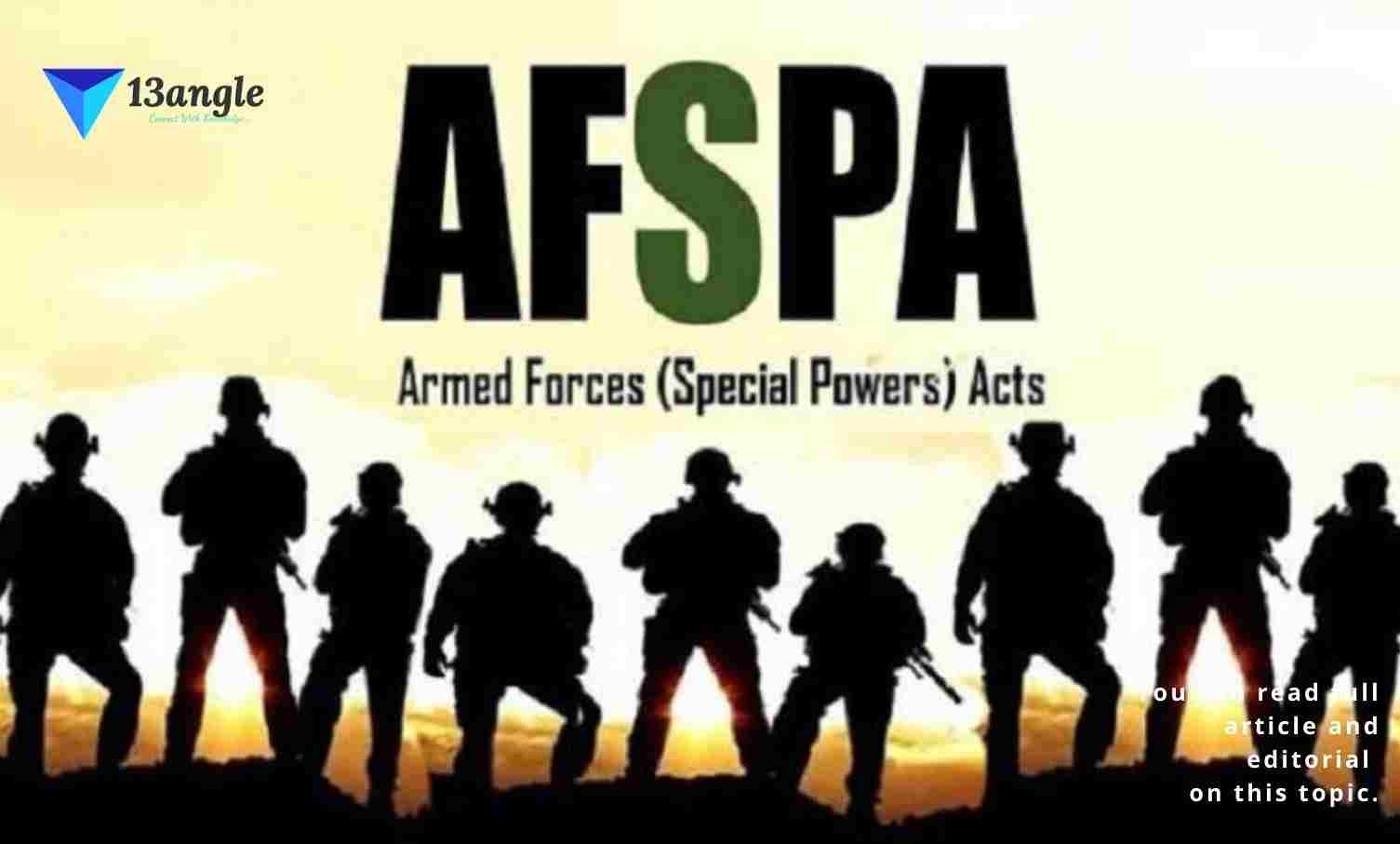- Umang Sagar
- Defence, Recent article
Two Spheres Of AFSPA
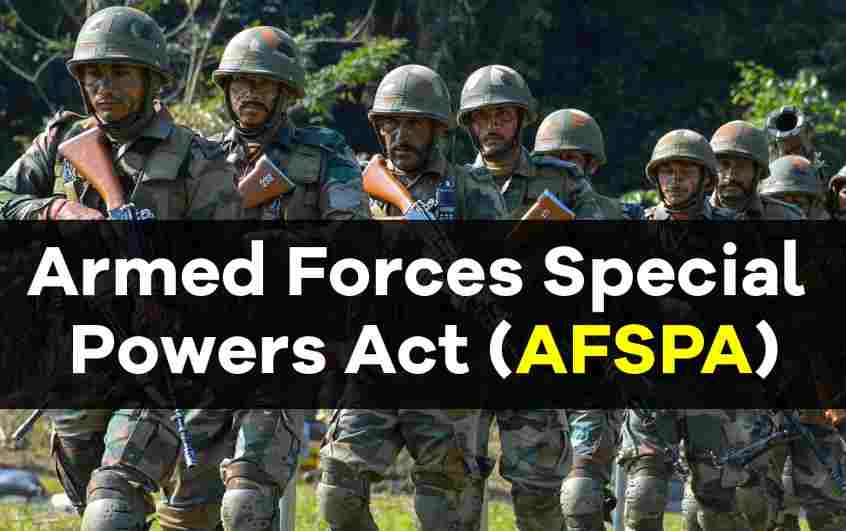
Definition
- AFSPA or Armed Forces Special Powers Act, by name one, can easily figure out that this Act gives special powers and privileges to the Armed forces and Central Armed Police Force (CAPF) of India. This law is imposed in areas that are marked as “Disturbed Areas”, i.e., the places where a high number of insurgencies is found, usually in the border states, where people cross the border illegally with the intention of carrying out anti-state activities and other forms of armed rebellion this is the reason of the enactment of AFSPA in regions like Jammu & Kashmir and to the seven states of the North East. AFSPA Act is implemented to maintain law and order under critical situations in disturbed areas.
Origin
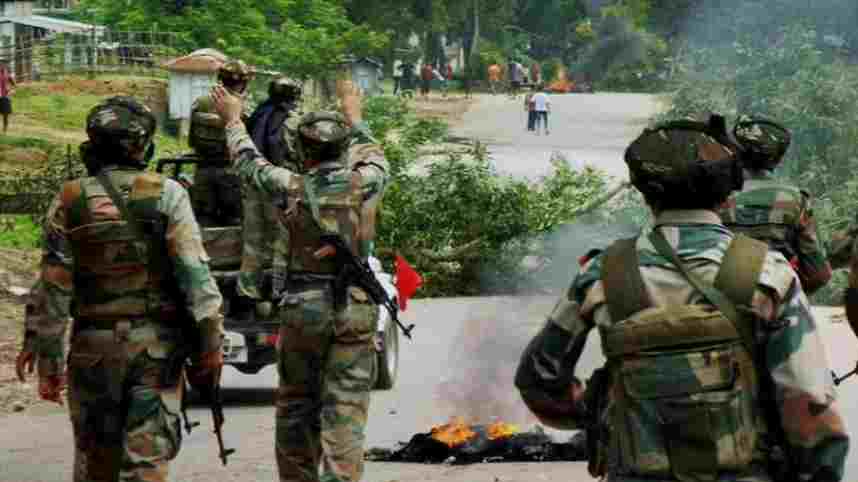
1. Pre-Independence :-
After the launch of the Quit-India Movement by Mahatma Gandhi on 8th August 1942, the people of India started a rebellion against the Britishers in a widespread. To suppress these movements and in order to bring the control over the country back by the Britishers, Lord Linlithgow, the viceroy of India on 15th August 1942 promulgated the Armed Forces Special Powers Act (Ordinance) to suppress the movements taking place after the Quit India Movement. Many leaders of the Indian National Congress were imprisoned. Indian freedom fighters set up Police Stations, railways, and other British infrastructure on fire. In response to this violence, Linlithgow ordered Police to kill the protestors and arrest several other rebels.
In 1947, the Indian Government issued four ordinances modeled after this one to address internal security concerns and turmoil caused by partition in four provinces: Bengal, Assam, East Bengal, and the United Provinces.
2. Post-Independence :-
- In 1954, there was an increase in violence and insurgencies in India’s north-eastern states, which became huge trouble for the Regional Government to control. To put down the revolt, the Indian Army and paramilitary soldiers from the Assam Rifles were dispatched. To prevent future insurgencies, Nehru’s Government introduced the Armed Forces (Special Powers) Bill in Parliament, which was passed by both Houses of Parliament on September 11, 1958, with the President’s consent. No one opposed this, Bill, except Surendra Mohanty and a few legislators. Surendra Mohanty, an Orissa MP, said, “We want a free India. However, we do not want a free India with barbed wires and concentration camps, where havaldar’s (sergeants) can shoot at sight any man.” But looking up to the critical situations in the North-Eastern regions, the law was successfully established in Nagaland.
Indian Army Personnel In Nagaland
Disturbed Area:-
The area was declared under the provision of Section 3 of AFSPA, also known as the Disturbed Areas (Special Courts) Act, 1976. An area can be put into the Disturbed areas list due to many factors such as differences and disputes between members of different religious, racial, language, or regional groups or communities and also due to external disturbances like insurgency or terrorism.
A Declaration of any region as a Disturbed Area can be given by the Governor of the state or the Central Government. According to the notification of the official gazette, either the entire area or part of it can be declared as disturbed. Even the State Government can share the opinion regarding the enforcement of the Act, but the Governor or the Centre can overturn their opinion according to Section (3) of the Act.
“Naga People’s Movement of Human Rights v. Union of India, AIR 1998 SC 431”, according to this judgment, it was stated that in regular intervals there should be a review upon the scenario of the region declared as a Disturbed Area in every 6 months, the area cannot be declared as disturbed for the unstated time period.
Disturbed Areas Act (DAA) or the Mini AFSPA- The Assam Disturbed Areas Act in beginning was brought up to suppress the Naga Uprising in 1955, which grants equal powers to the armed forces as in AFSPA. The only difference is that it’s a state law and cannot be invoked or enforced by the Central Authorities.
Can AFSPA Be In Force Even Without DAA?
- According to the precedent set in the case of Jammu and Kashmir, it can be stated that even if the DAA lapses, the Government reasoned that the state can still be declared Disturbed under Section (3) of AFSPA.
Powers Provided To The Armed Officials Under AFSPA
- After the declaration of AFSPA, a Commissioned or a Non-Commissioned Officer, a Warrant officer, or any other official of the same rank enjoys various power under Section 4 of the Act, such as –
In the situation where the officials posted in the Disturbed area assumes that the person is suspicious and can hamper the peace and violate the law and order of the area, even after being provided with necessary warnings, can be charged by force or fire arms to the point of death.
Forming assemblies of five or more people, or carrying illegal weapons or substances which can disrupt the sovereignty of the state can be charged upon by force as necessary to the extent of death.
The officials can destroy any arms dump or likely to be used as a storage place for keeping the dumps. Even the officials have the power to search the shelter of any civilian based on mere suspicion of the fact that the place could be used for carrying out illegal activities like arms smuggling, arms and ammunition storage, a hideout for insurgents, or anyone who is or who can indulge in carrying out any activities which can disrupt the peace and harmony of the state.
Any suspect indulged in a cognizable crime or any person who is suspicious to carry out any illegal activities can be arrested without a warrant.
Even no warrant is needed to search any premises of any accused or a suspect. The officials have all right to prohibit any malicious activities which can disrupt the peace of the state.
Section 6 of the Act, grants immunity to officials from being legally prosecuted except the sanctions by the Central Government. “No prosecution, suit or any other legal proceeding can be instituted, except with the previous sanction of the Central Government.”
Current Status Of AFSPA In Different States
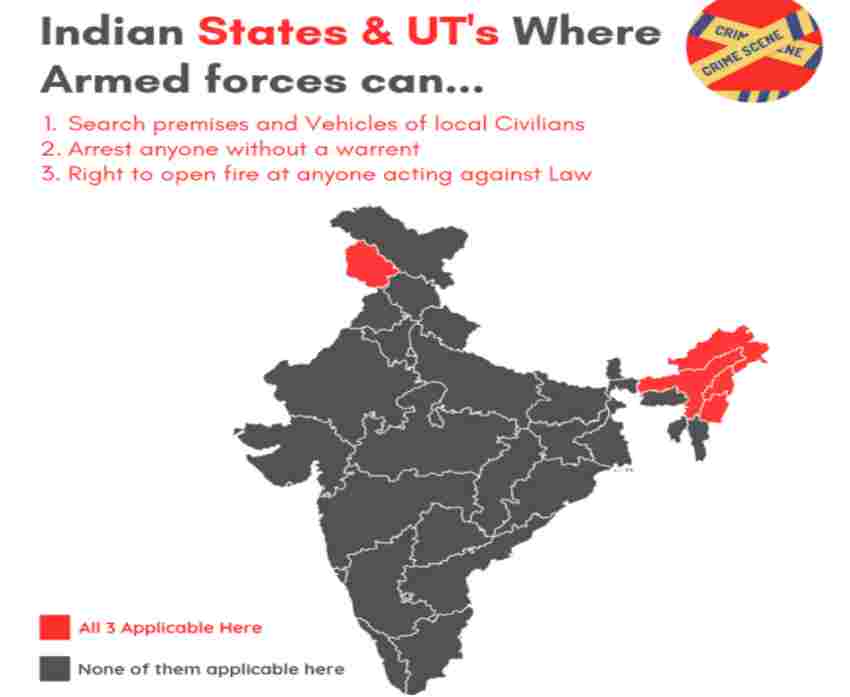
1. Assam: –
The first state where the AFSPA was enacted was Assam in 1958. The whole state was declared as Disturbed Area, due to the rise of, The United Liberation Front of Asom (ULFA)- A separatist armed organization, established with the objective to create a separate nation for the people of Assam. The entire state is listed as a “Disturbed Area” to date (the last review was done on 28th August 2021).
AFSPA has helped a lot in improving the Security and suppression of movements to a large extent by the ULFA’s. The Union Home Ministry has expressed a view on withdrawing partial AFSPA on the state due to the improved situation. However, according to reports by MHA by an RTI in 2017, it was stated that there has been seen a 31% rise in Human Rights violation complaints in Assam.
2. Tripura: –
Tripura shares a long border of around 856 km with Bangladesh, around 1995 the two-armed separatist groups- NLFT (National Liberation Front of Tripura) and ATTF (All Tripura Tiger Force) were accused of receiving training and other resources from Bangladesh with a demand of creating a separate nation of Tripura. In 1997, after the increase of insurgency and movements of these groups, AFSPA was enacted because local authorities found it extremely difficult to control such activities.
Political Parties and Local people demanded the repeal of such an Act and described AFSPA as ‘Draconian’ which means ‘extremely harsh and severe’ because the Act was suppressing the Tribal Groups of Tripura.
After 18 years on May 15, the Government of Tripura withdrew the AFSPA looking at the decrease in the militant activities, after a Governmental review was done as per the Supreme Court guidelines in 1998 Judgement (review of the situation of the region every 6 months).
3. Manipur: –
Manipur was listed under the status of disturbed area in 1980, to counter the separatist group such as UNLF (United Liberation Front of Manipur), PLA (the People’s Liberation Army of Manipur), and PREPAK (People’s Revolutionary Party of Kangleipak). The demand of the groups was to create a separate nation of Manipur because few Manipuris considered the merger of Manipur with India in 1949 was signed under ‘duress’ which means ‘by threat or force’. Manipur shares the border with the Republic of Myanmar, and it was alleged that these groups were helped by Myanmar by providing the resources and a rise in the number of insurgents from Myanmar was noticed.
The Supreme Court in July 2016, questioned AFSPA’s validity in the state of Manipur, which was enforced in 1958. It was alleged that during this period around 1500 people died due to fake encounters or extra-judicial killings, these series of operations were conducted by the Army in Manipur between 1979 and 2012. The PIL or Public Interest Litigation was filed by the families of victims who were killed by fake encounters, this movement was initiated by the EEVFAM (Extra Judicial Execution Victim Families Association) a registered trust of Manipur who worked for the Justice of such victims.
The Supreme Court Judgement in July 2017, recognized that the victims of people from disturbed areas have no means of getting Justice and Basic Human Rights. SC also directed the CBI to set up SIT (Special Investigation Team) for the reports of such Fake Encounters.
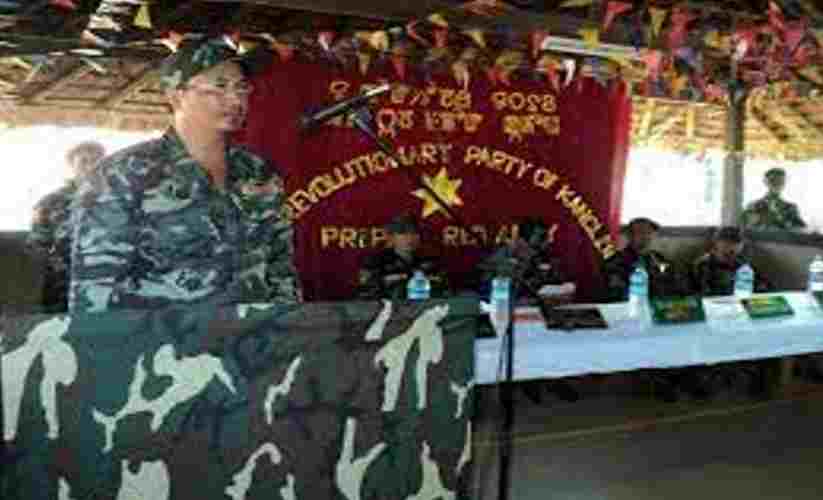
4. Meghalaya
In the state of Meghalaya, the entire state is not imposed under AFSPA, only the area of around 20 km which shares the border with Assam is imposed under AFSPA. The Act was enforced due to notice of rising in the number of anti-state activities in this region.
The High Court of Meghalaya in 2015 made a ‘Suo-Moto’ i.e., ‘On its own motion’, suggesting the Centre impose AFSPA also in the region of Garo Hills of Meghalaya due to the rise in the number of insurgencies and increasing support towards the militant group.
5. Mizoram
- The Mizo National Famine Front or MNF was established by Pu Laldenga in the struggle of famine situation in the Mizo area in 1959, which then come under Assam state. They demanded a separate state because the Indian Government was the inaction of the Indian Government toward the famine. However, the insurgent activities drop down in Mizoram after the signing of the “Mizoram Peace Accord” in 1986 between MNF and the Indian Government.
6. Nagaland
- In Nagaland, the entire state is enforced by AFSPA due to a high number of insurgencies, anti-state resources from Chinese proxies, killings of officials, and training received by the militants from Myanmar and Bangladesh. However, an agreement between NSCN-IM, a Naga insurgent group, and the Government of India in 2015, for the revocation of AFSPA from Nagaland, and in return the NSCN-IM will stop disrupting the harmony but the Act was not withdrawn due to the continuation of anti-state activities.
7. Arunachal Pradesh
- In Arunachal Pradesh, only three districts i.e., Changlong, Longding, and Tirap, and police stations in the area of Namsai and Mahadevpur are enforced under AFSPA. The NSCN (National Socialist Council of Nagaland), an armed separatist group is still indulged in extortion and killings of the Security Forces. In 2017, the AFSPA was again extended for 3 months after the militants of the National Democratic Front of Bodoland (NDFB) escaped to Myanmar using the border shared by these districts.
8. Jammu and Kashmir
- AFSPA was enforced in 1990 to counter the separatist insurgencies and rising terrorism by Pakistan and also to tackle the internal problems demanding a separate nation for Jammu and Kashmir. However, there have been instances where fake killings, rape, and human rights violations have been reported. The incidence of ‘Shopian Killings’ in 2009 was that few officials were alleged of killed innocents in the name of countering terrorism, this case has never reached a logical end. But the Act is still in operation because repealing AFSPA is not the solution to tackling terror in such regions.
9. Punjab and Chandigarh
- It was introduced to tackle the Khalistan insurgency in 1983. The activists demanded a separate nation for Punjab backed by funds from Pakistan. But the Khalistan threat was neutralized by India very quickly and in 1997 the Act was repealed in Punjab and Chandigarh.
Judicial Inroad
1. Naga People’s Movement of Human Rights vs. Union of India, 1998–
In this case, the question was aroused on the validity of the AFSPA. The Judgement in this case, by Supreme Court and Five-Judge Bench, constituted that the AFSPA is not unconstitutional and neither Section 4 and 5 of the Act is arbitrary or unreasonable hence it doesn’t violate the provision of the Constitution.
Few guidelines were stated which included, the army officials to use reasonable force required according to the situation of the suspect, the arrested suspect should be handed over to the nearest police station within 24 hours and the Act should be reviewed by the state every 6 months.
2. BP Jeevan Reddy Committee-
- After the killing in 2005 of Thangjam Manorama in Manipur by the Assam Rifles, this committee was set up by the Supreme Court to review AFSPA. The reports by the committee showed the number of sexual offences by the Armed Force officials, and instances of Fake Encounters. It concluded that AFSPA had become “An object of hate and an instrument of discrimination and highhandedness.” The committee suggested the need for repeal of the Act and stated the extensive powers given to the Armed officials which could be easily misused.
3. Santosh Hedge Committee-
- After the petition filed by the victim’s families of the extrajudicial killing of 1528 people in the state of Manipur in 1979. The Supreme Court set up this committee to review the case. The report submitted in 2013 by this Committee stated, that out of every 6 encounters 5 were fake. And the committee stated that the Uniform Men in charge in Manipur have misused their powers.
Supreme Court then in its 2016 Judgement stated that the law is the same for all and the misuse of the powers in the name of terror control cannot be taken lightly, so from now on every death caused by the Officials in the disturbed areas should be inspected by CID and National Human Rights Commission (NHRC).
Criticism Of AFSPA
Despite several amendments in the AFSPA and noticeable results given by the Armed Forces in the disturbed areas, still, there are several reasons why AFSPA is criticized to date by people such as the power to shoot at sight by the Armed Forces on mere suspicion violates the principles of Right to Life, there have been several instances where death was caused either by fake encounters or genuine mistake differentiating a civilian and terrorist, example of such instances is killing of Thangjam Manorama in 2004, a Human Right Activist who was considered as an informer of PLA and IED by Assam Rifles, her reports submitted by the army officials and the post-mortem report didn’t match. And this case was widely considered an instance of a fake encounter.
Apart from such charges by the people on the Armed Force officials, there have been instances where the Army officials got indulged in Sexual offenses, losing the trust of the general people of the Army and giving rise to separatist groups. The most debated point of the Act is the immunity given to the Armed Forces from the prosecution. Along with this, though indirectly but it’s seen that Article 21 (Right to Life and Liberty) is suppressed which could not even get suppressed during the Emergency but is suppressed by the Armed Forces due to the immense power they get from the AFSPA.
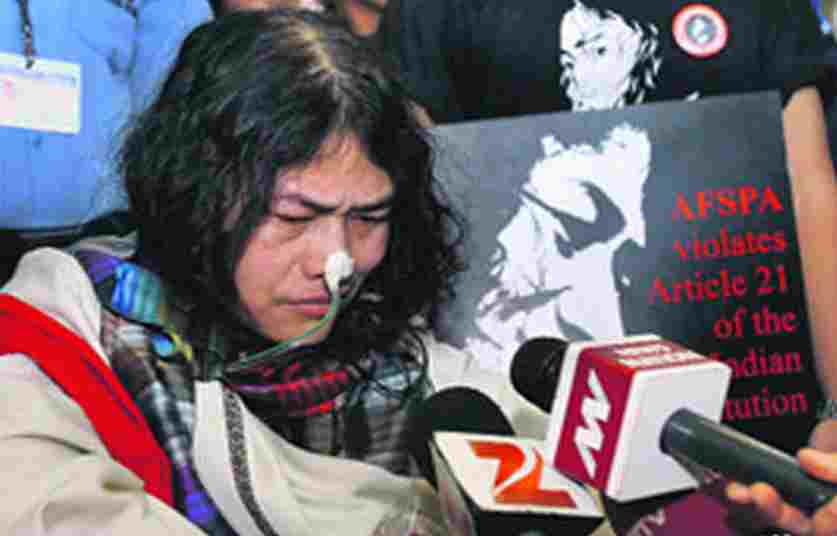
In the past, the CBI’s interventions in encounter killings have failed miserably. Consider the Pathribal killings. Five days later, Indian Army personnel claimed to have killed five “foreign insurgents” who were responsible for the Pathribal atrocity. Following an investigation, it was discovered that those killed were local males who had no involvement in the Pathribal killings. The case that followed wove its way through the courts and the CBI. Five troops were charged with “cold-blooded murder” by the CBI, according to the charge sheet. However, the Supreme Court ruled in 2012 that the Army had the option of prosecuting these defendants in a civilian court or a military tribunal. The Army chose the latter option, and the matter was closed in 2014 due to a lack of evidence.
Recent Nagaland Issue– Nagaland shares its border with Assam, Manipur, Arunachal Pradesh, and Myanmar. The massacre took place in the district of Mon, where around 15 civilians of Konyak tribes were killed by the Armed Forces, in a confusion about considering them, Insurgents. They were actually the miners and were returning home from a pick-up van, this happened because Army mistakenly identified them as the members of the NSCN group, as they had Intelligence information about an Insurgency that was about to take place from that area only. This incident raised a rage among the villagers and they gathered and attacked the Armed Force officials which further resulted in the killing of 7 civilians and an army man. After which the CM of Nagaland along with opponent parties demanded revocation of the Act but looking at the anguish situation AFSPA was extended further for 6 months.
All these factors have caused distrust among the locals against the Army and endless protests have been carried forward to revoke such an extreme act which instead of protecting the people are working either way.
Is AFSPA Really Needed?
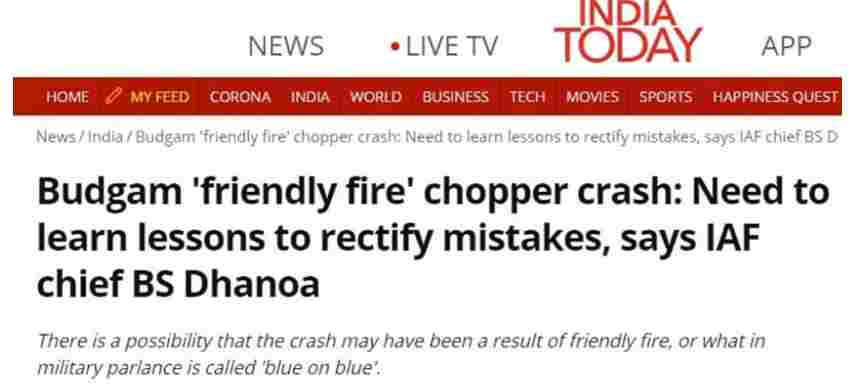
The Armed Force Special Protection Act on its face values seems like there’s no accountability of this Act, it may look like a symbol of persecution tyranny or an object of hate. Perhaps it also creates mistrust between Local people and the Indian Government but it must not be unseen that the Indian Armed Forces as well as the Indian Paramilitary Forces when compared to other forces in the world, they hold the highest morals and ethics when it comes to doing their job. The question arises regarding the misuse of AFSPA and the condition when the Government tries to use the AFSPA as a tool and misuse its power. It’s important to raise such a question in a Democracy but the point here is Indian Armed Forces just like Parliament are an individual institution and are highly competent professionals. They won’t do anything that could tarnish their reputation but mistakes do happen even by trained Armed Forces due to various reasons like Intelligence Failures, Insufficient Input, Human Error, Inferior Technology, etc. There have been Human Rights violations by Armed Forces but that violation was for the sake of security and law and order of our Nation. And in situations where the guilt is established proper measures are taken because these institutions try to become better so that the error can be reduced to a minimum. At the end of the day, AFSPA is enforced to maintain the law and order, the North-Eastern belt is a hot belt for conducting Anti-states activities from border areas and carrying out insurgencies. These militants have received their training from Myanmar and take shelter in the Jungles sharing a border with India, the objectives of such ethnic groups are to fight for separation of the states from Indian Autonomy.
Many reports suggest China takes advantage of such a situation and provide them with proper resources which could help them in disrupting the Integrity and Sovereignty of the nation because anyways without this support these militant groups cannot receive such high-tech arms and ammunition.
In 2021, the commanding officer of Assam Rifles was killed by his family in Manipur, now the question arises how were they able to get the training for planting IEDS which was used during the Ambush of the Commanding Officer, later it was found that it was PREPAK (People’s Revolutionary Party of Kangleipak) who was indulged behind this misfortunate incidence.
During the misfortunate incidence where the Army mistook the civilians as Insurgents, every action was taken from a soldier to an Analyst of Intelligence so that it never happens again. The protests regarding the repeal of AFSPA in various places are taken as an advantage for ethnic groups and a few opponent parties which works on the repealing of AFSPA to carry out Anti-states activities. If the AFSPA is revoked the Armed forces won’t be able to operate n such critical regions resulting in rising in the number of insurgencies causing widespread violence, kidnapping, extortion, and demand for a different nation.
Conclusion
Everything has its own set of advantages and disadvantages, but we need to look at the bigger picture, undoubtedly AFSPA is considered a symbol of Oppression among many people but this is also true that the situations dealt by Armed Forces in disturbed areas are not normal and the Local Authorities can’t tackle situations due to two reasons firstly insufficient resources and secondly the threat of Armed Separatist Groups, being local these groups can easily threaten the authority on the name of the family, which may result in Improper functioning in regards of maintaining law and order contributing to the widespread threat of terrorization by the external forces working to disrupt the harmony and peace of India. Though the fact that there have been instances where the powers of the Armed Forces are misused cannot be overlooked we need to also take in account the actions that are taken by the Judiciary and Government against the guilty official.
The need is not to repeal the Act from Disturbed Areas but to apply necessary amendments for the betterment of the Act like putting the cases of the victims under fast trial where the necessary Justice is provided whereas the guilty officials can be charged quickly so that the somewhat lost trust upon the Army by some people is regained. It is high time for the four parties — civil society, the Armed Forces, the States, and the Government of India — to make ongoing and concentrated efforts to find a peaceful solution to the festering problem, with a little consideration from all corners.
Top 13 Interesting Facts About AFSPA
Irom Sharmila of Manipur sat on hunger strike for 16 years for revocation of AFSPA. This was the world’s longest hunger strike.
AFSPA cannot be declared by the State Government it can only be suggested to the Government.
AFSPA is a Colonial Law introduced first by Lord Linlithgow, to suppress the Quit-India Movement.
AFSPA came into force during Nehru’s Government due to a rise in insurgency and the demand for a separate nation in the North-Eastern region of India.
AFSPA in Jammu and Kashmir exists without being on the list of Disturbed areas.
Punjab and Chandigarh were the first states to abolish AFSPA in 1997.
The DAA was withdrawn by the Punjab government in 2008.
Chandigarh’s DAA was withdrawn in 2012 after a plea was filed in the High Court by a local member of the Janata Dal.
AFSPA indirectly violates Article 21, Right to Life and Personal Liberty.
Disturbed Areas Act is also known as Mini-AFSPA.
There are three types of Indian Armed Forces- the Indian Army, the Indian Navy, and the Indian Air Force.
There are seven types of Central Armed Police Forces- Assam Rifles, BSF, CISF, Central Reserve Police, SSB, NSS, and ITBP.
The petition to provide justice to the victim’s families suffered by Extra-Judicial Killings was filled by a registered trust EEVFAM (Extra Judicial Execution Victim Families Association).




